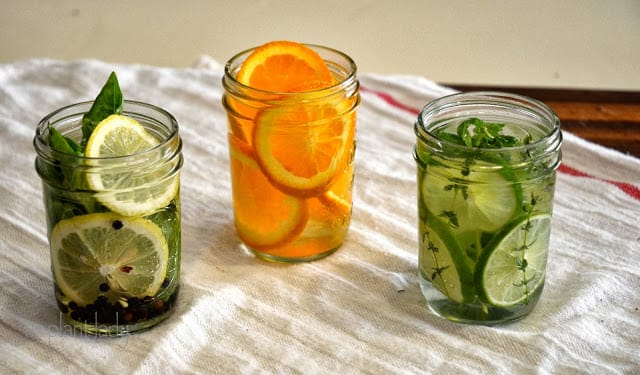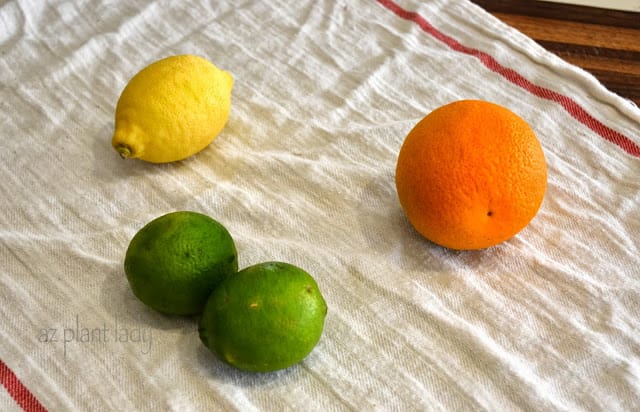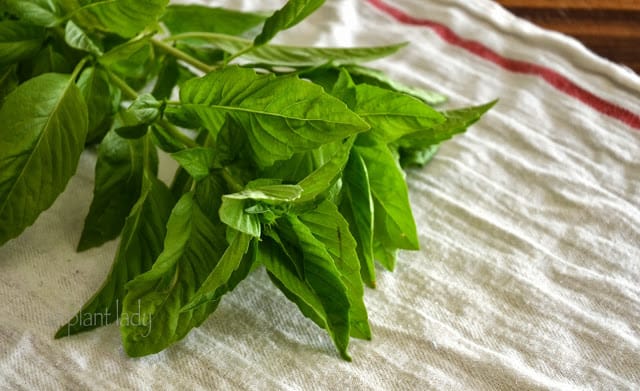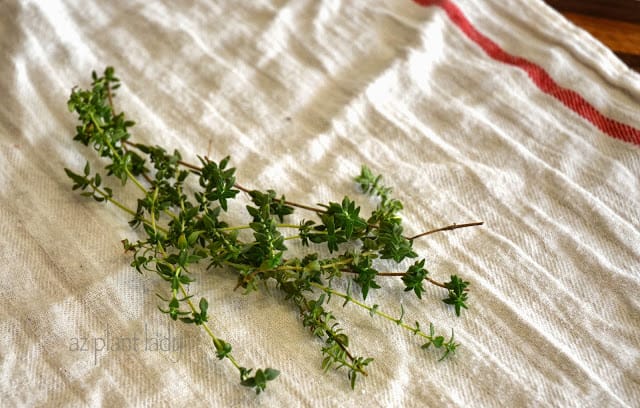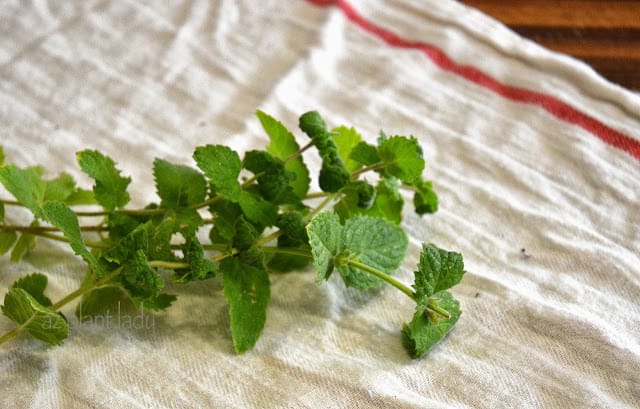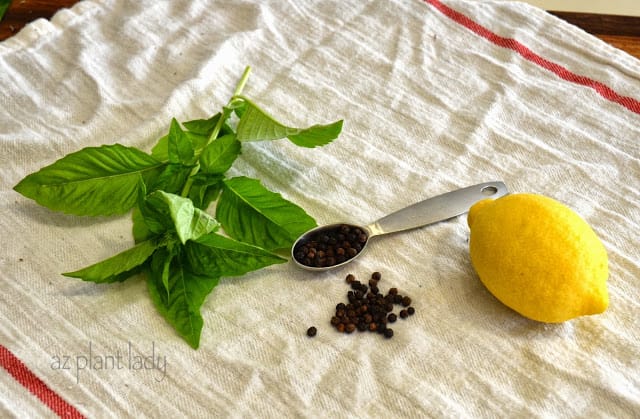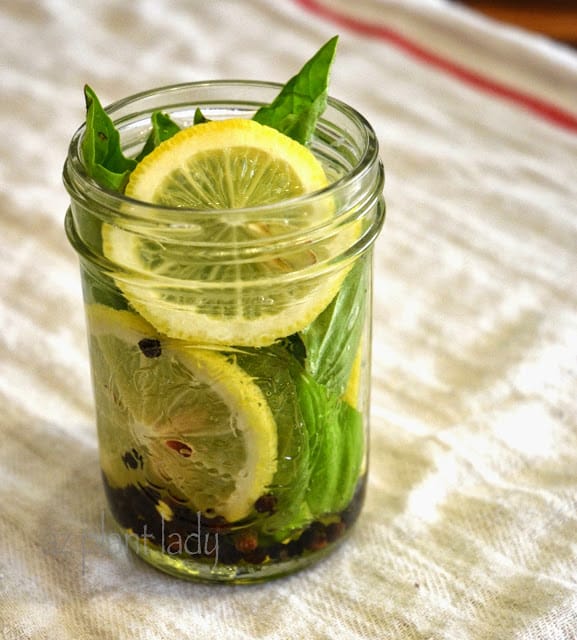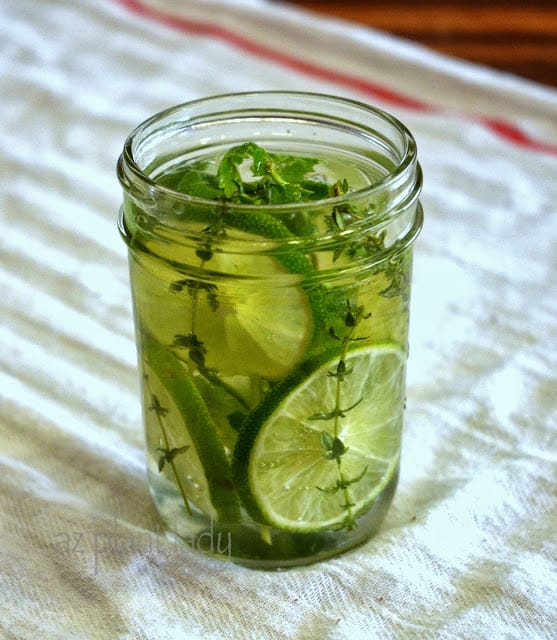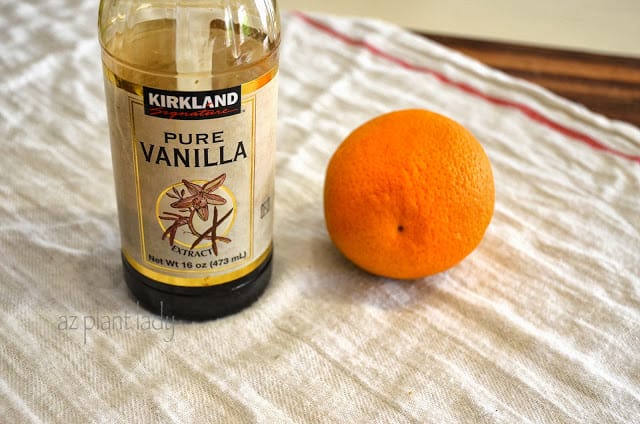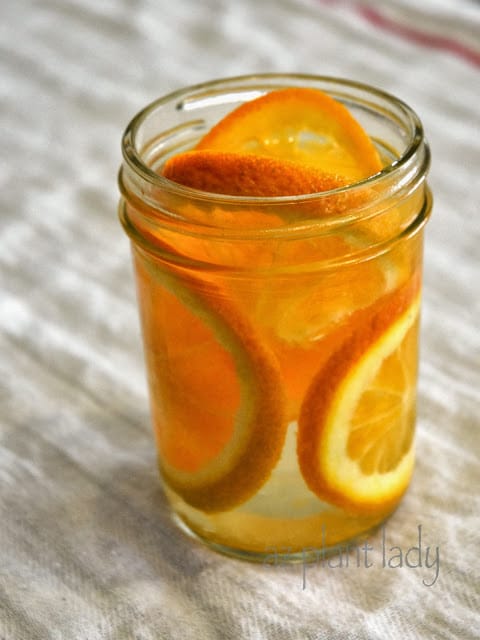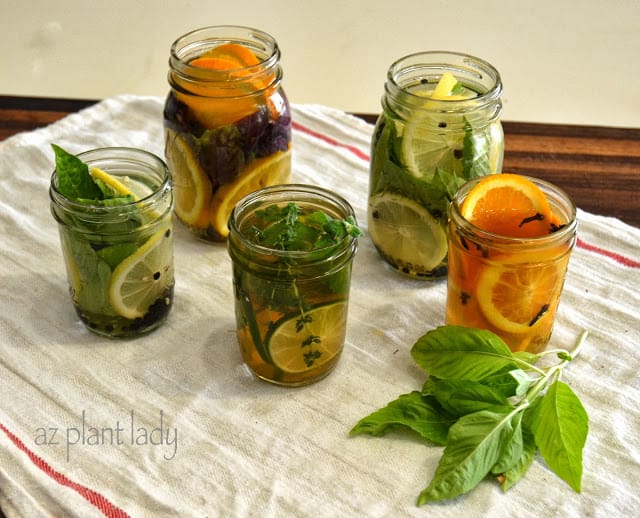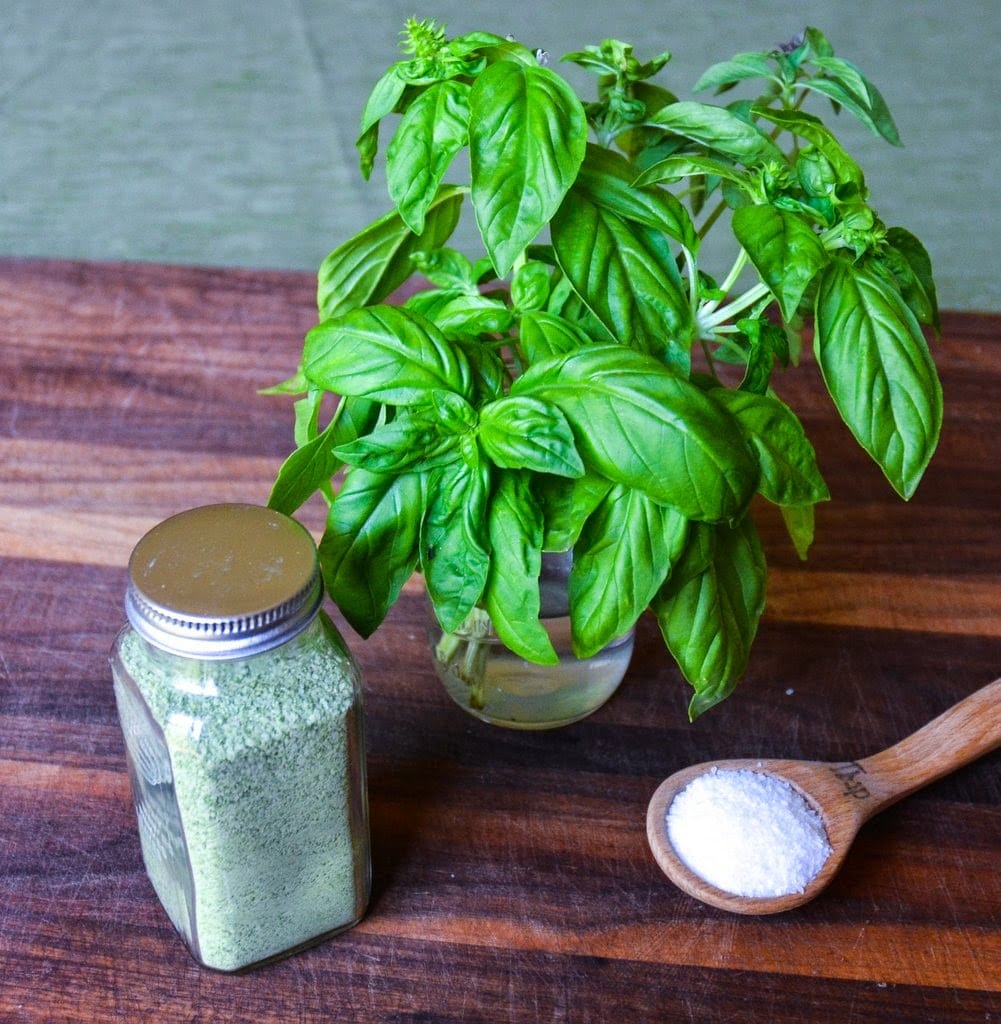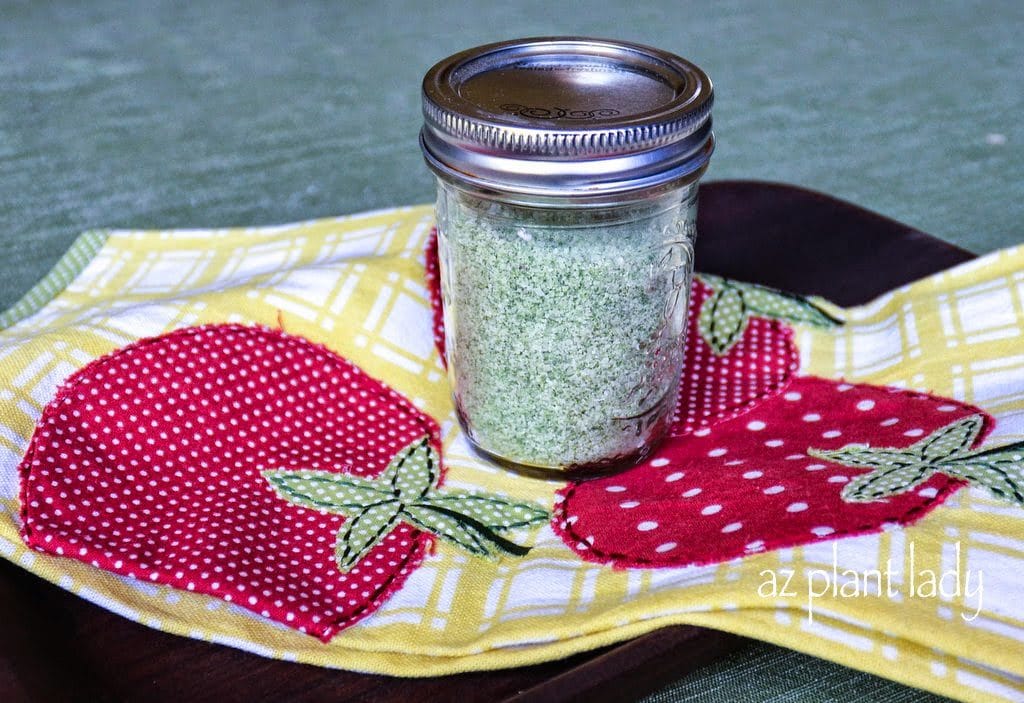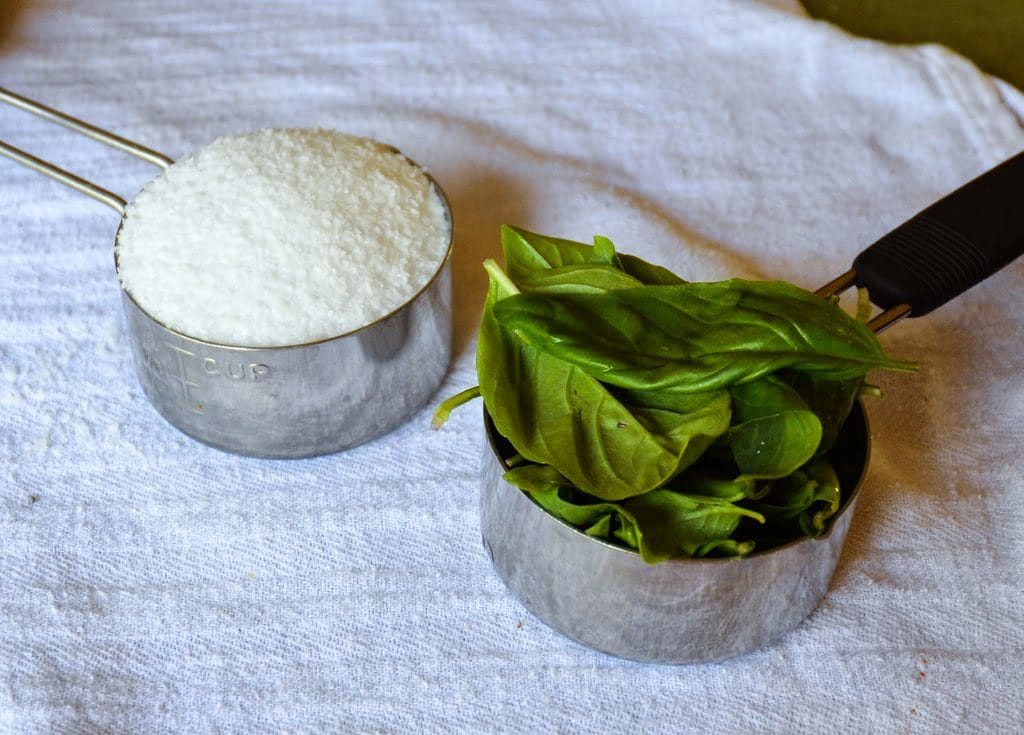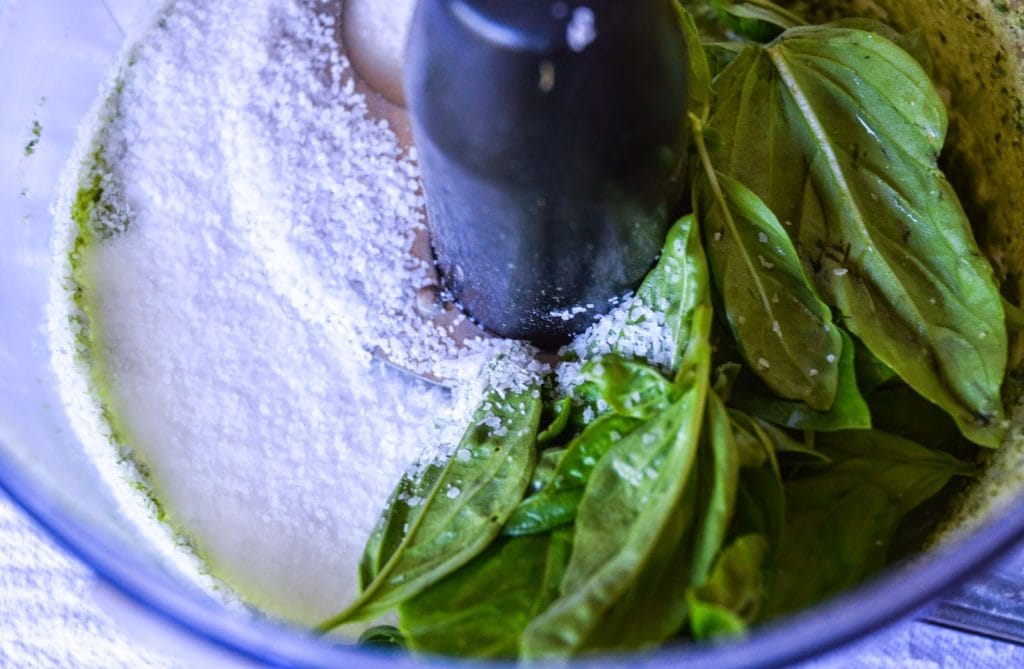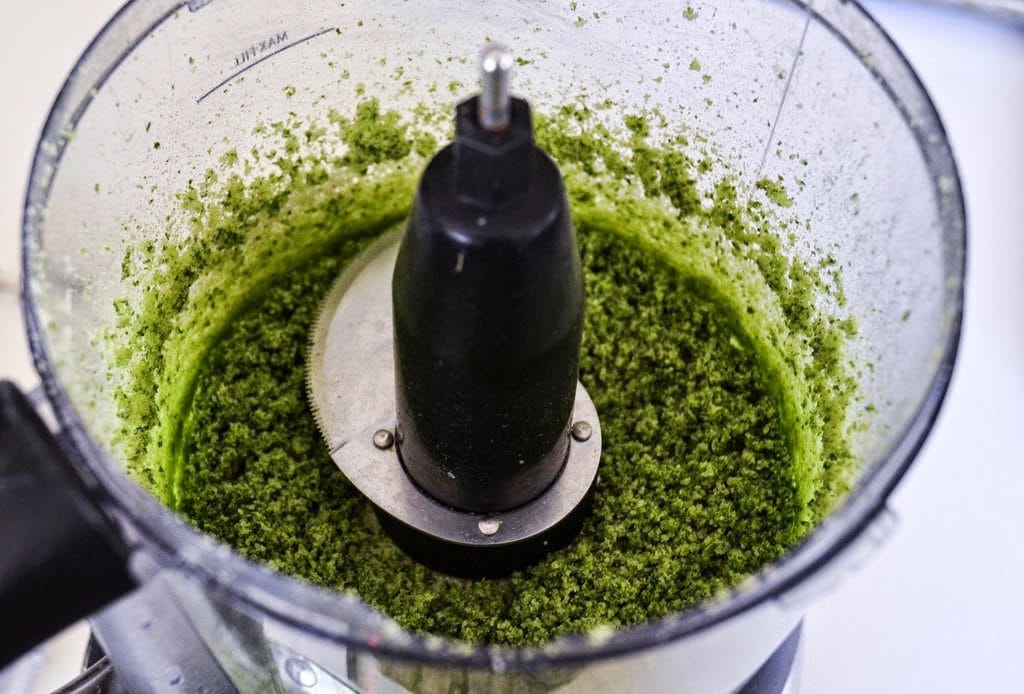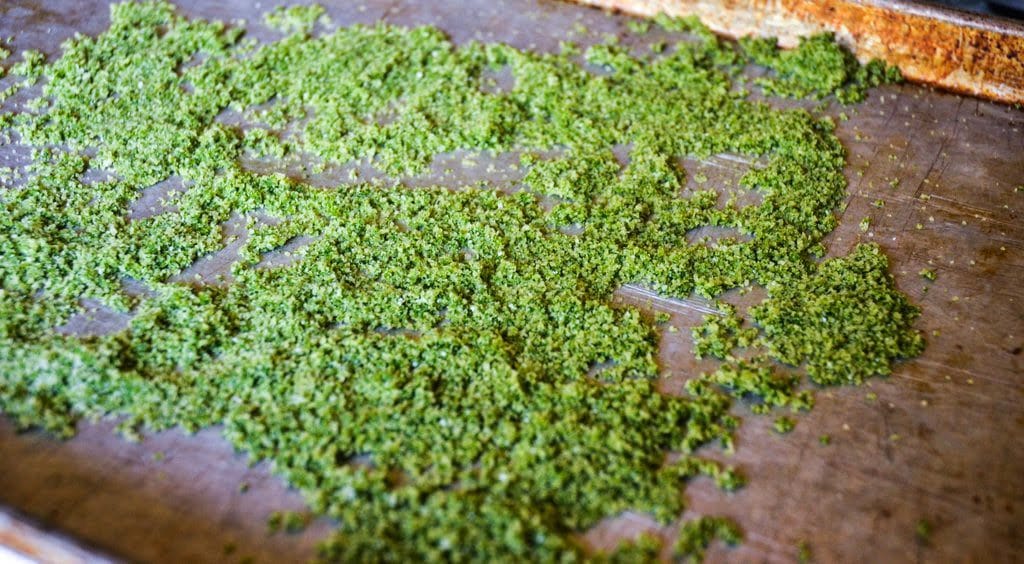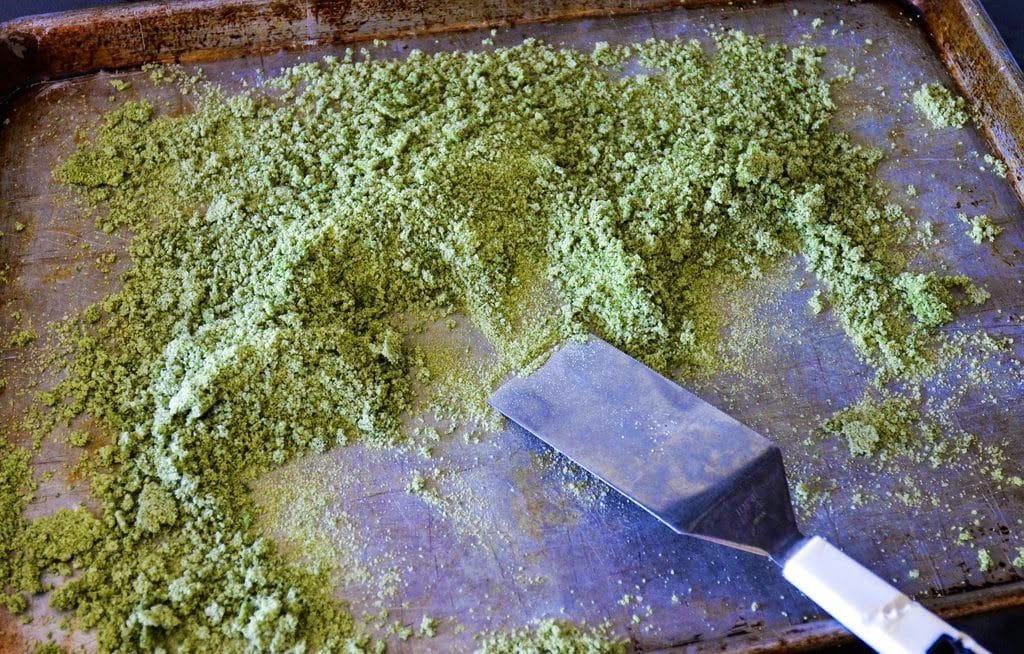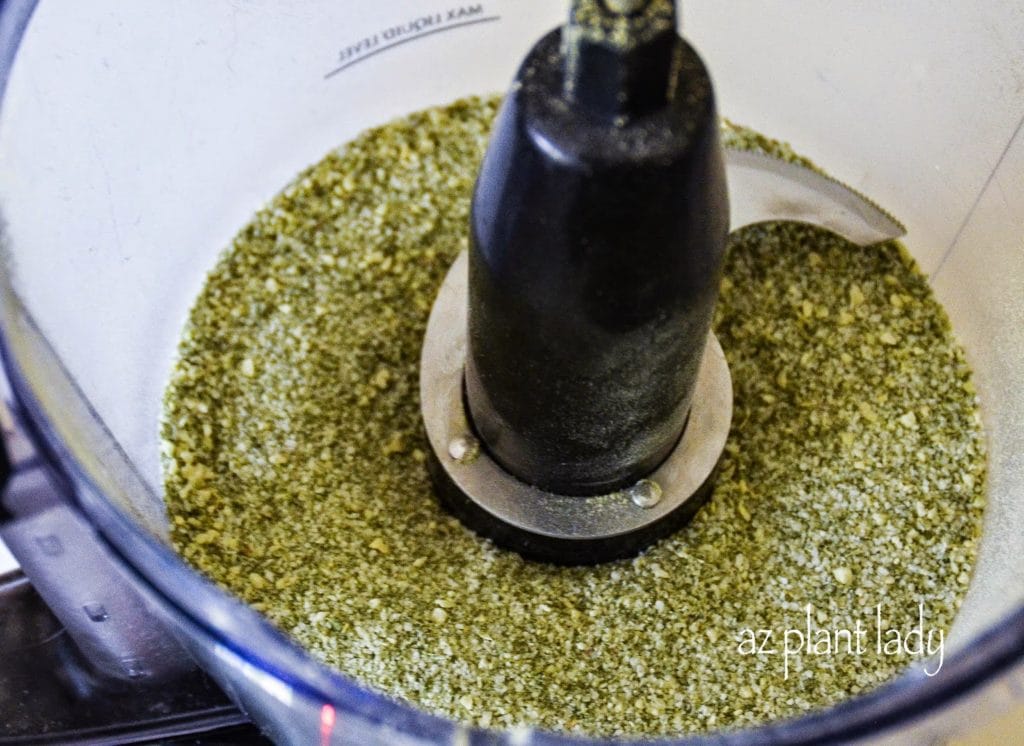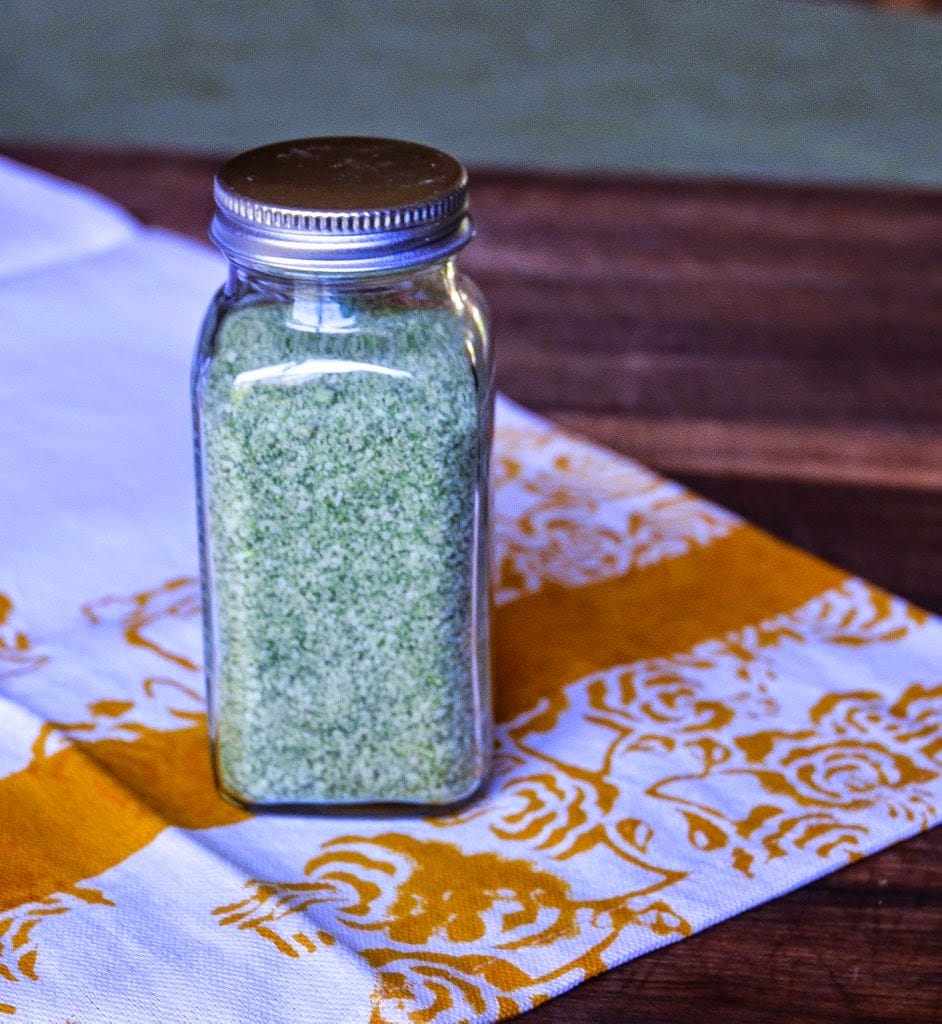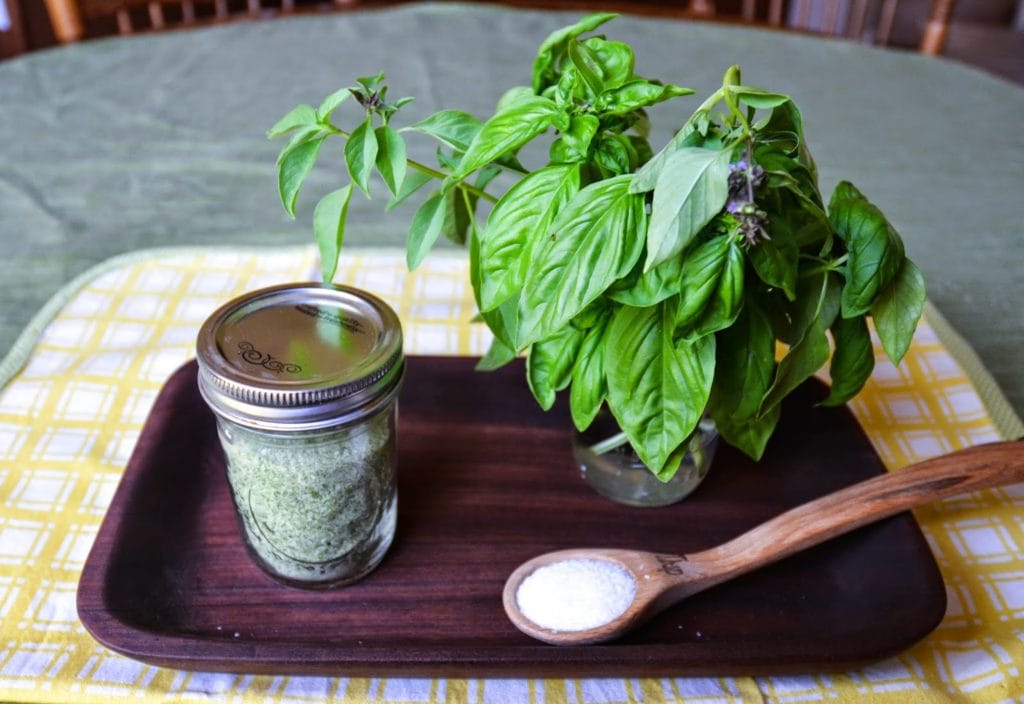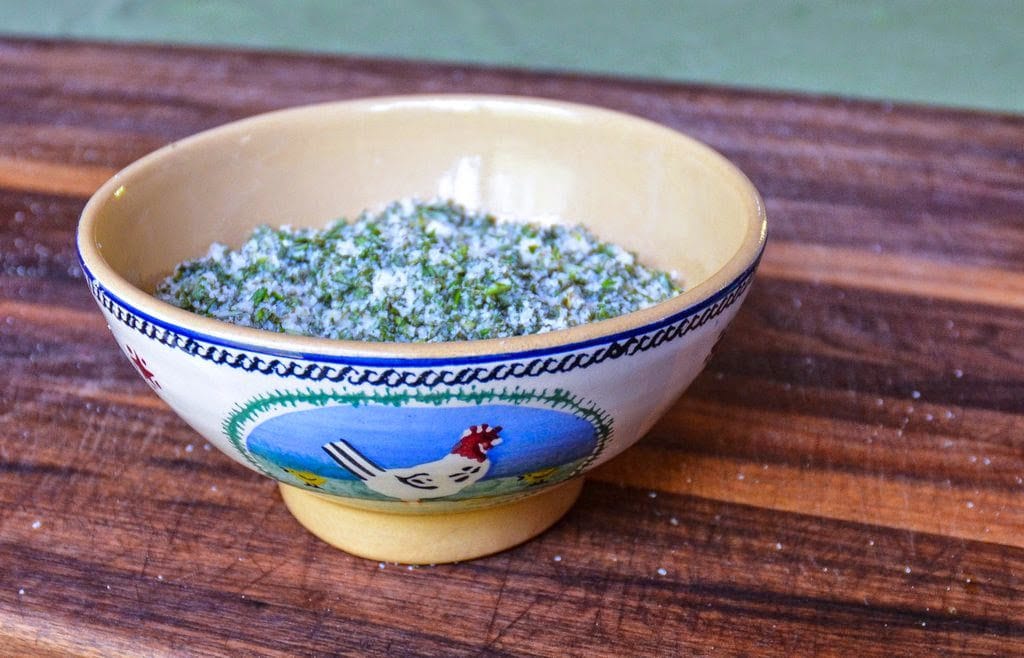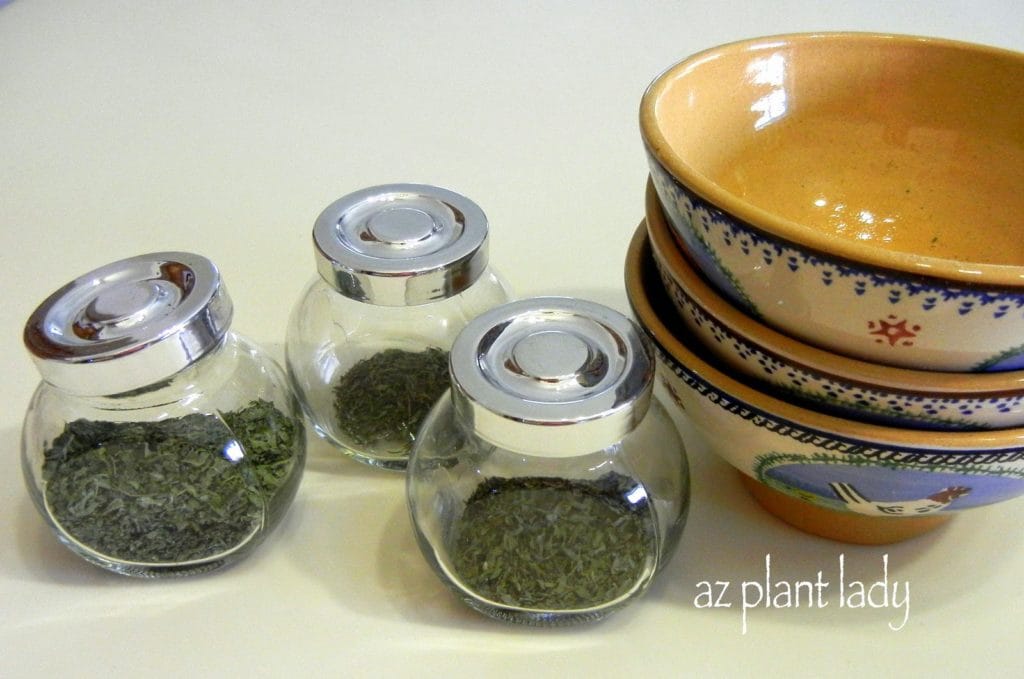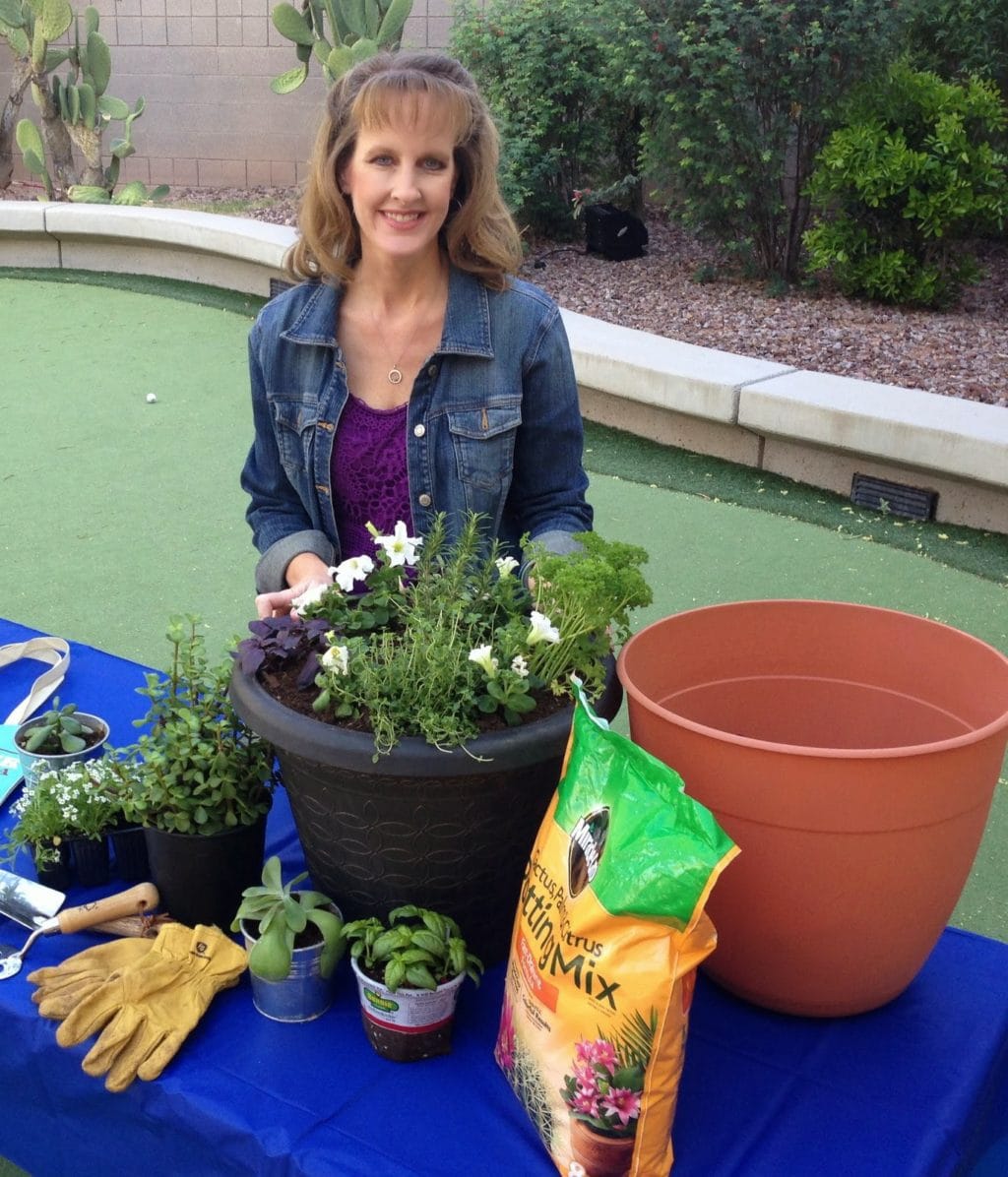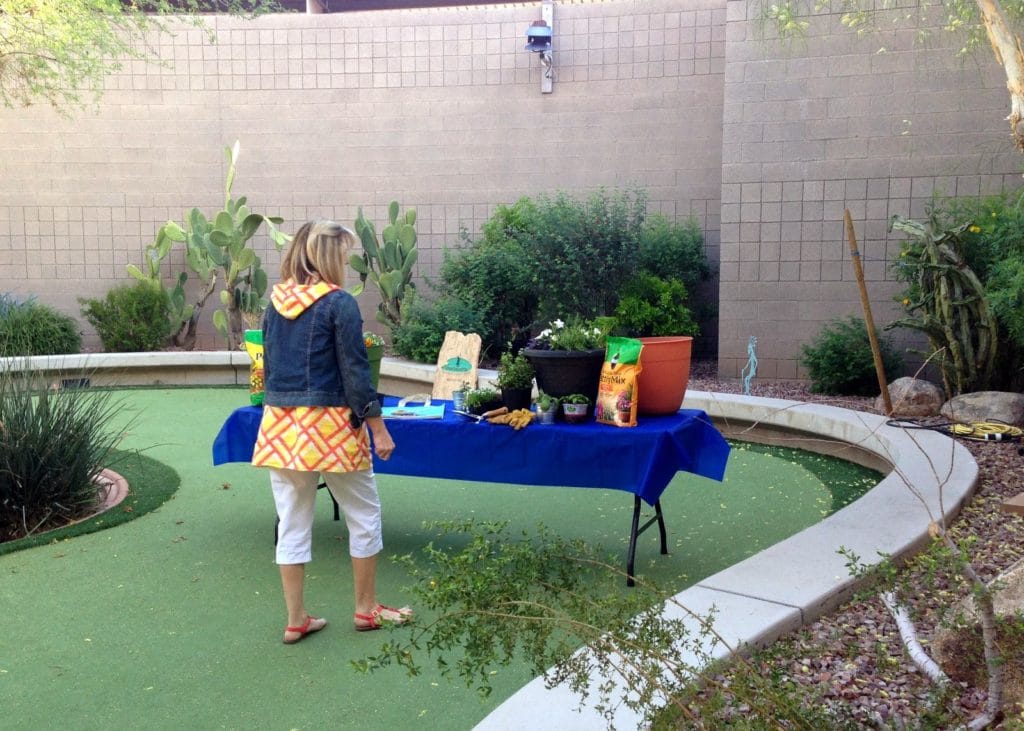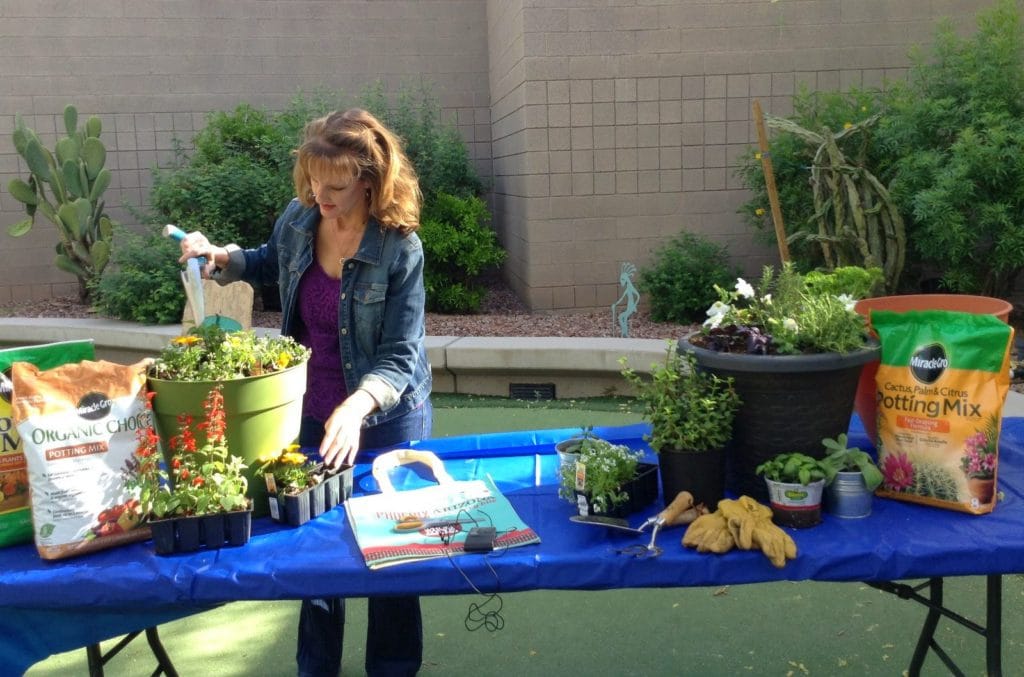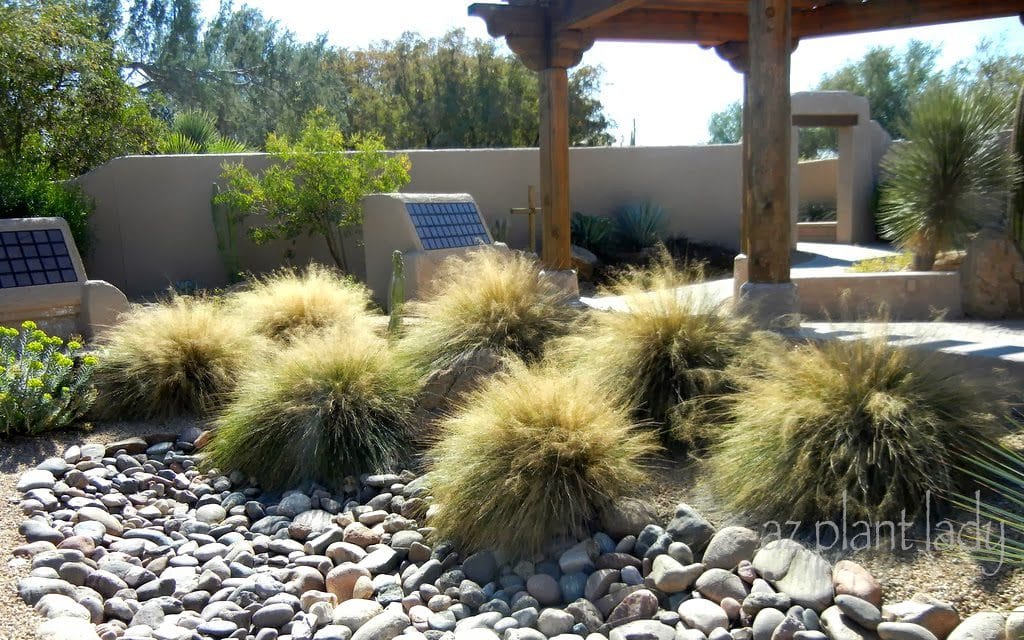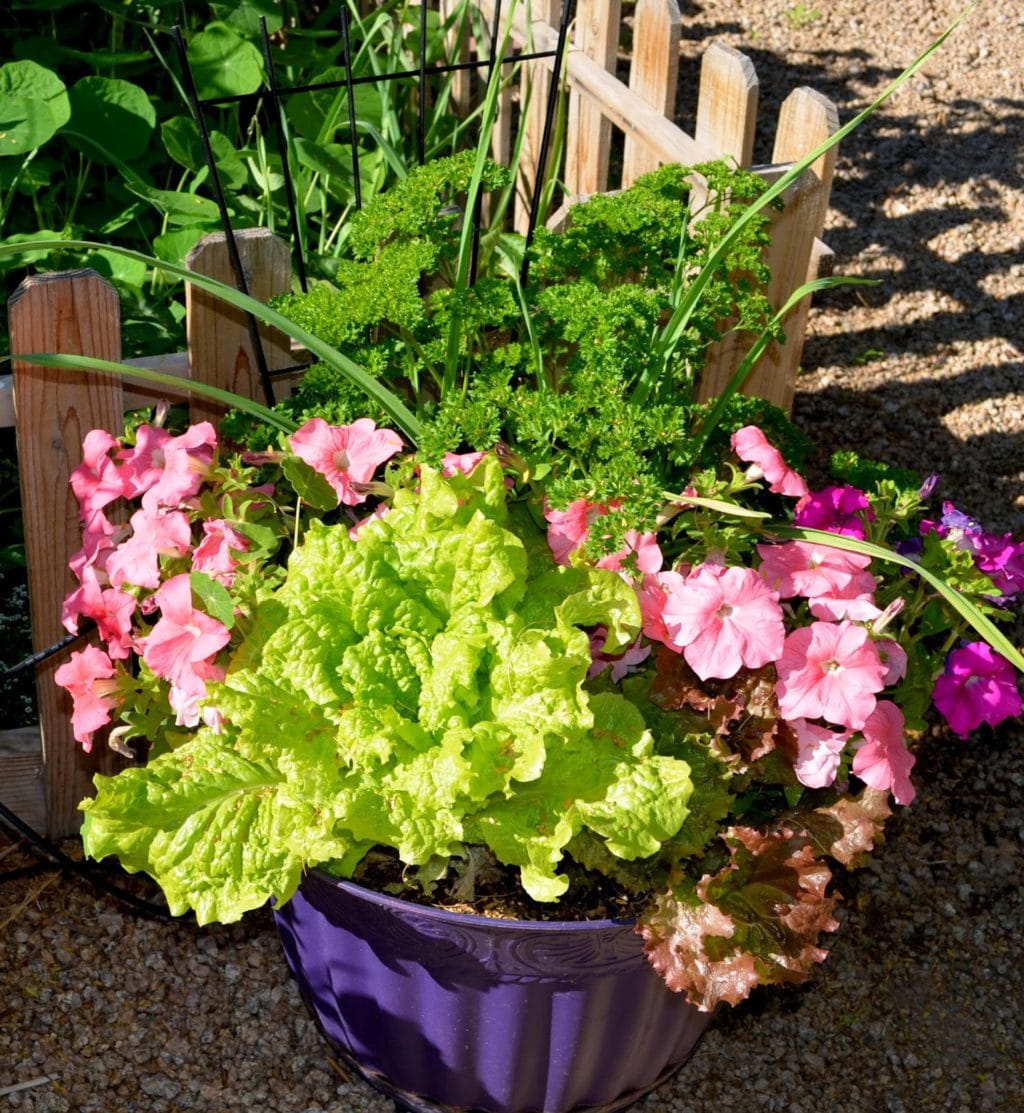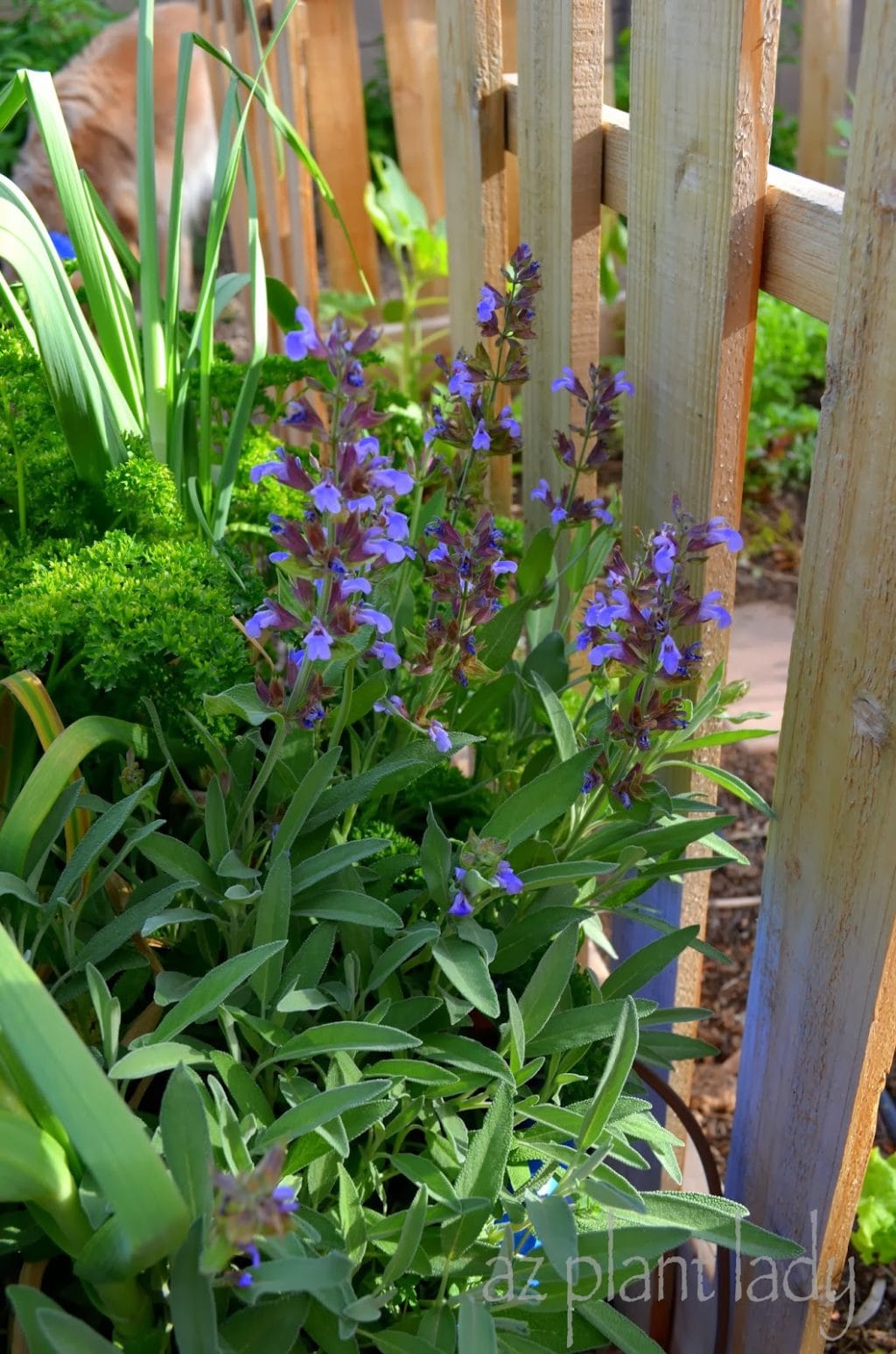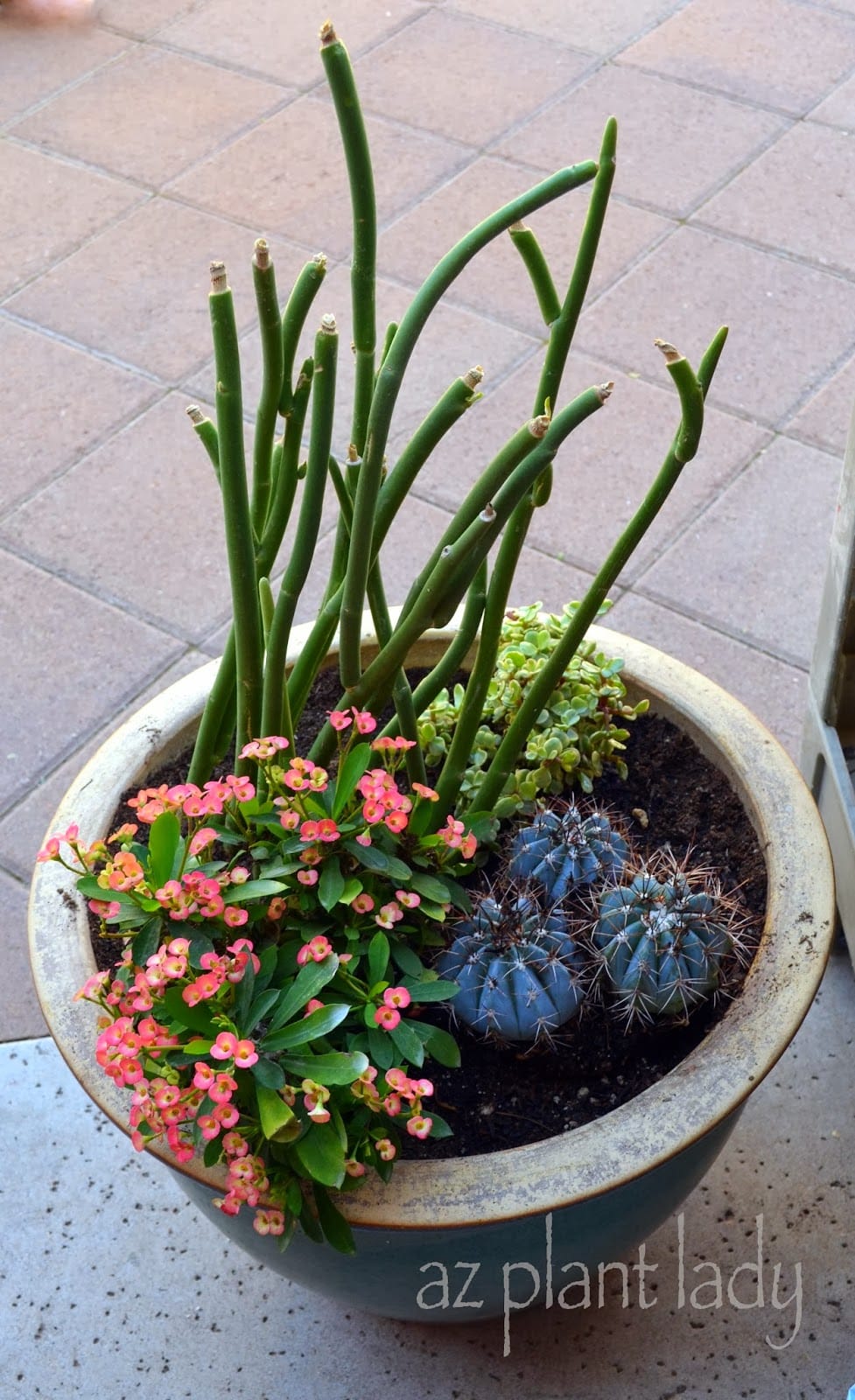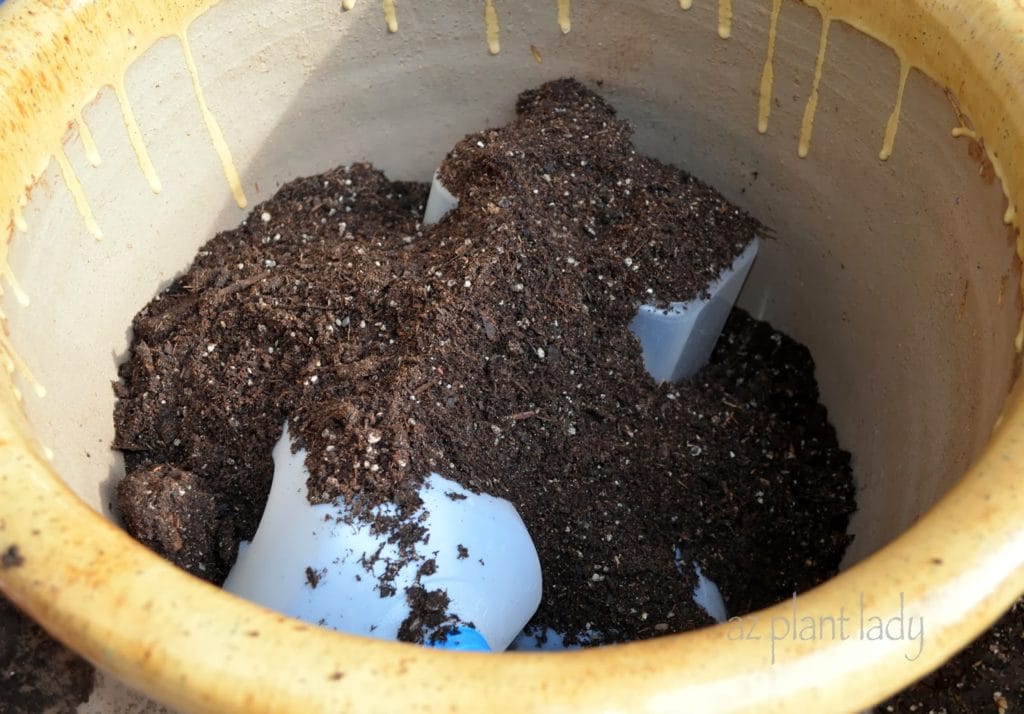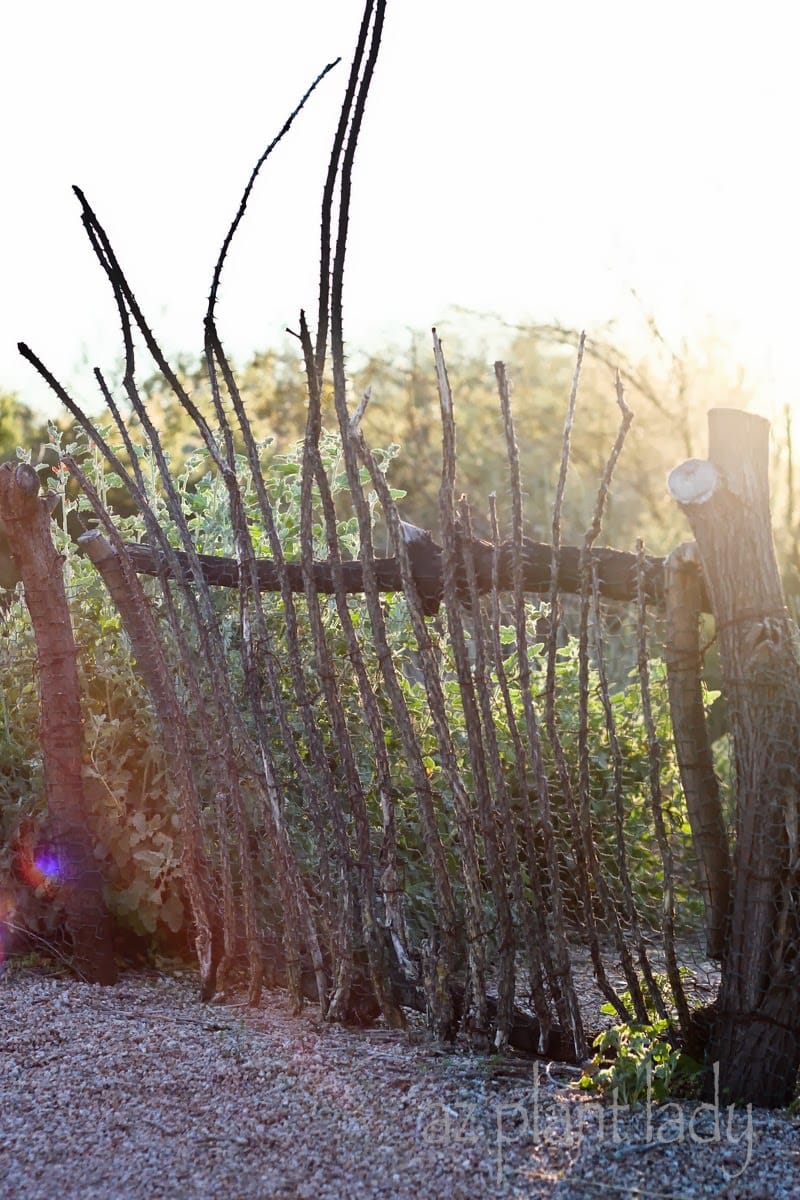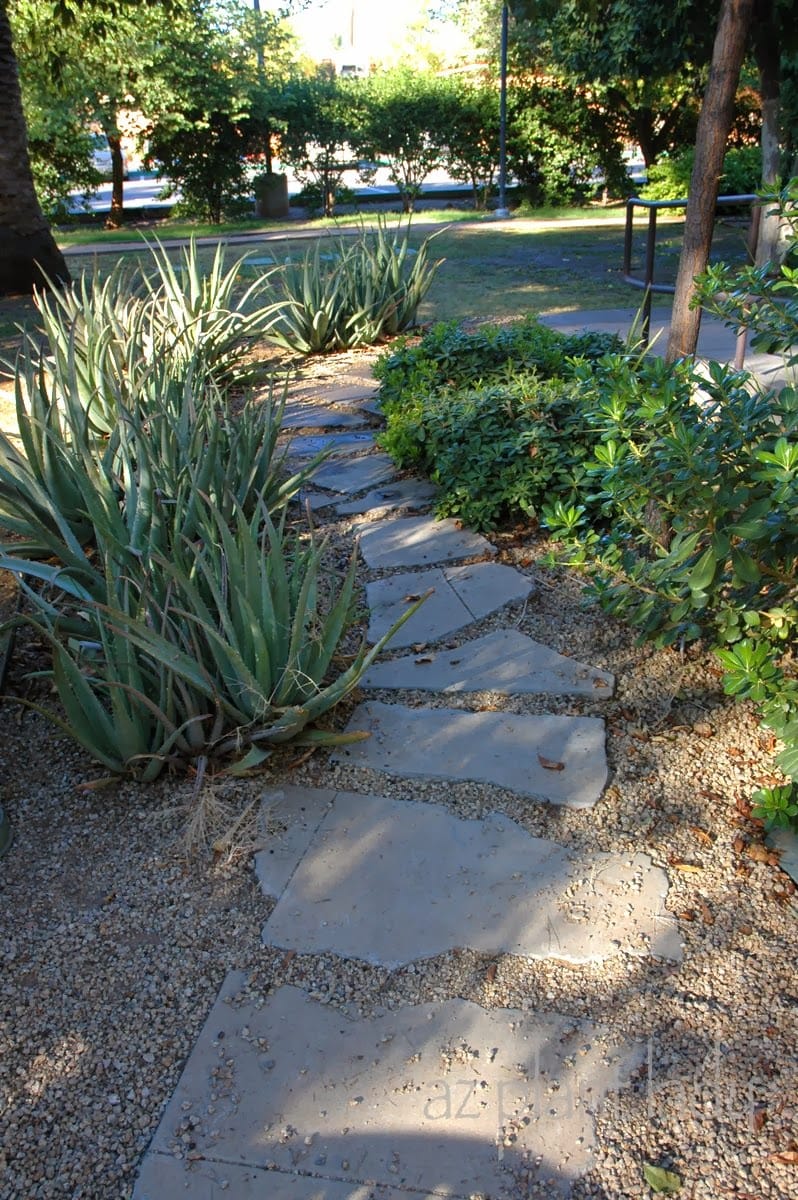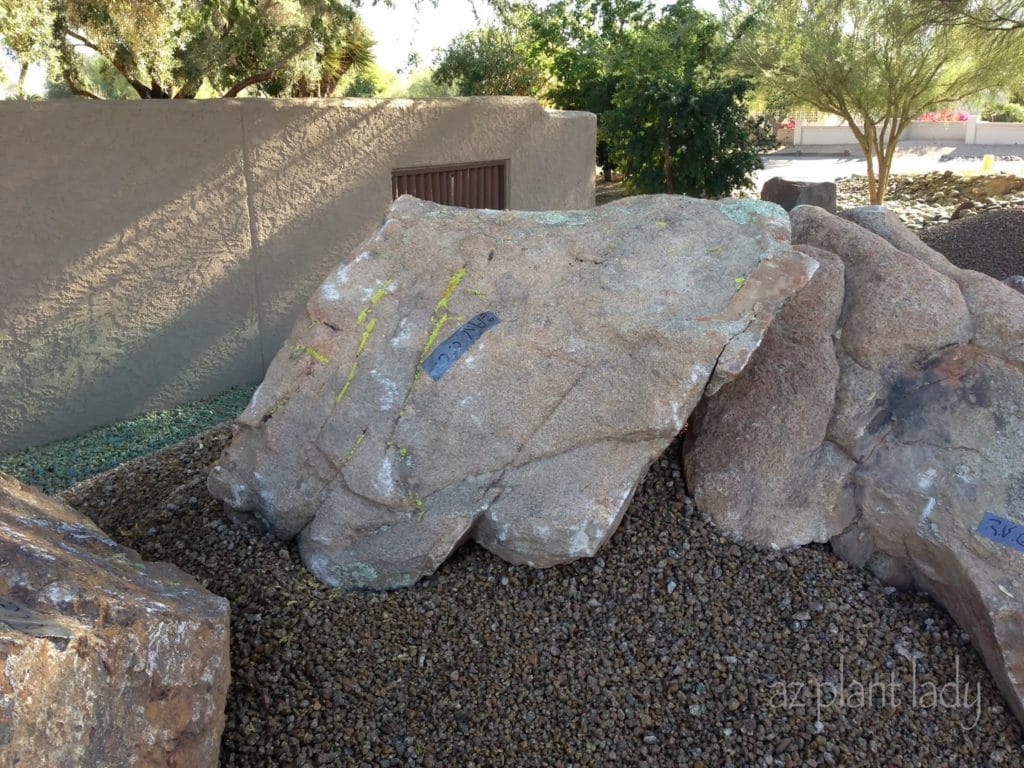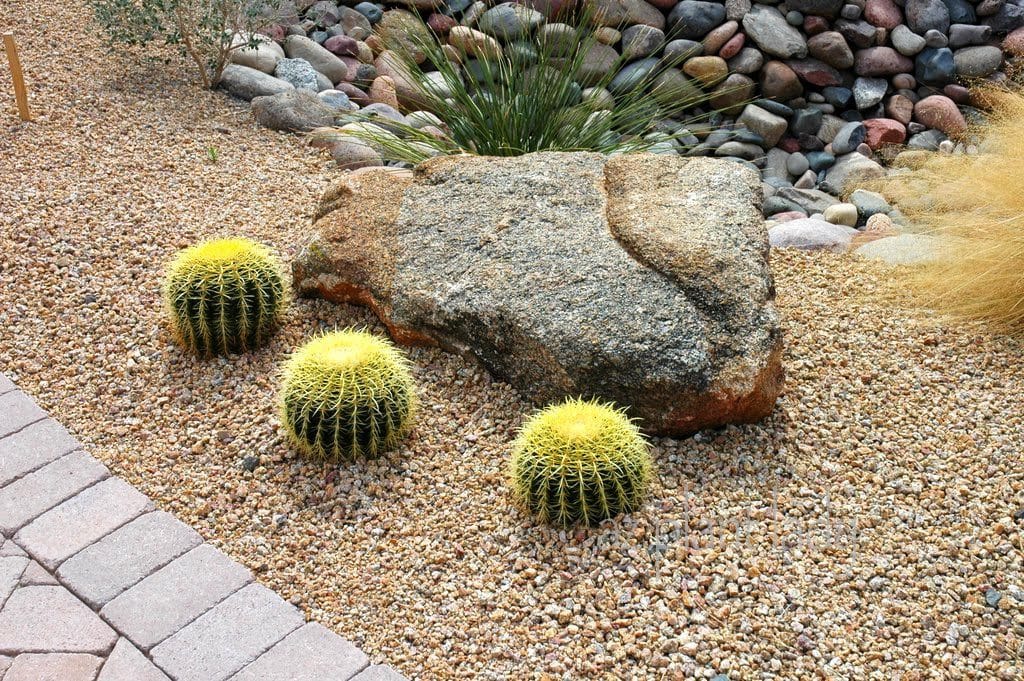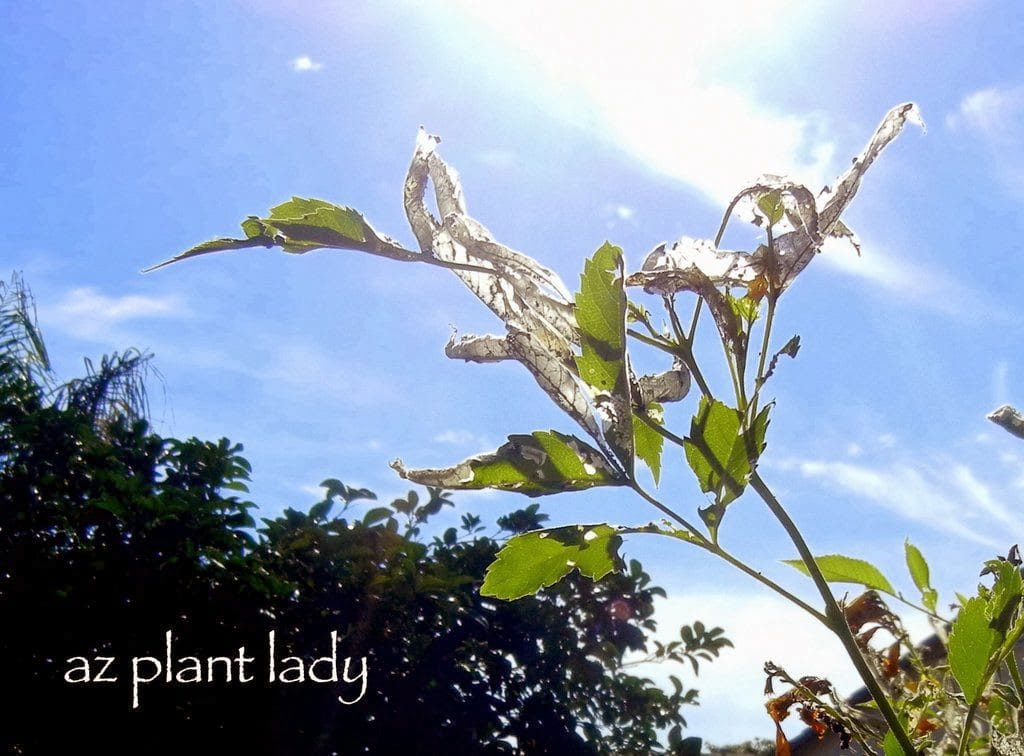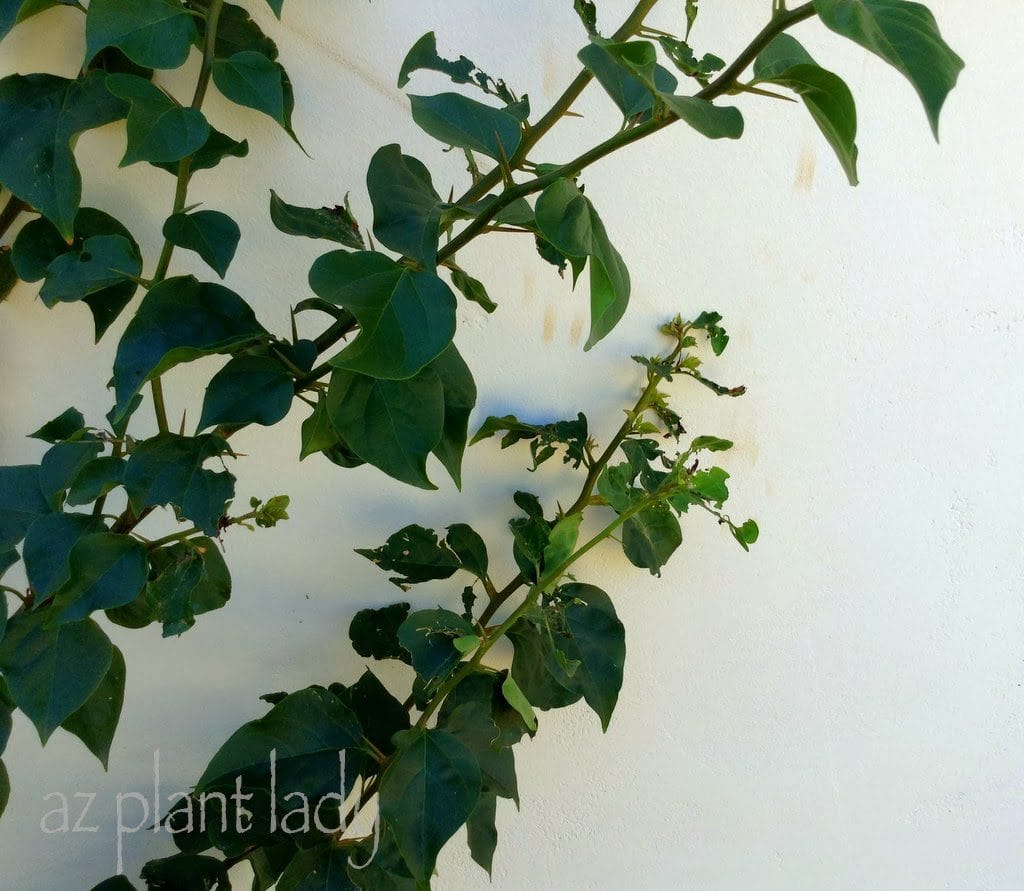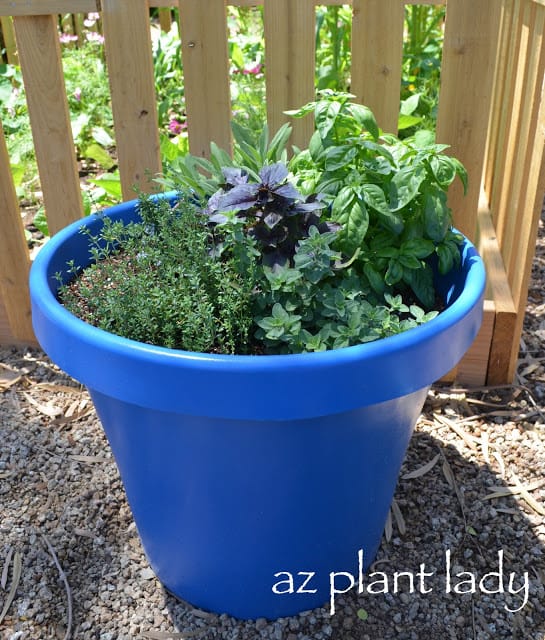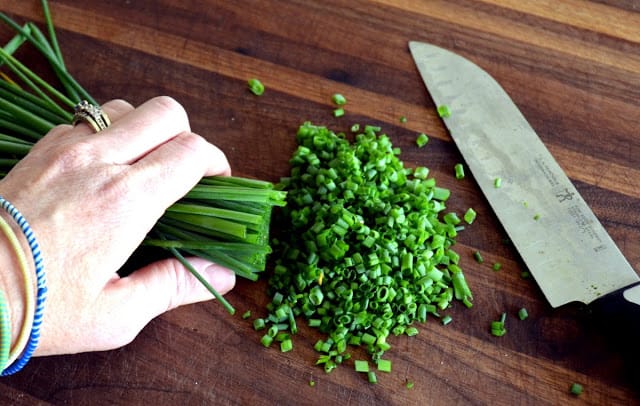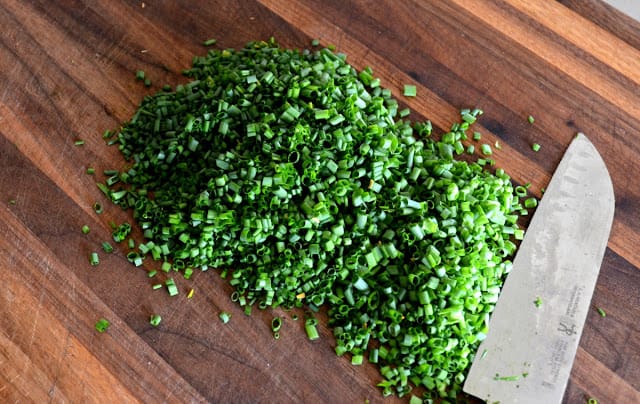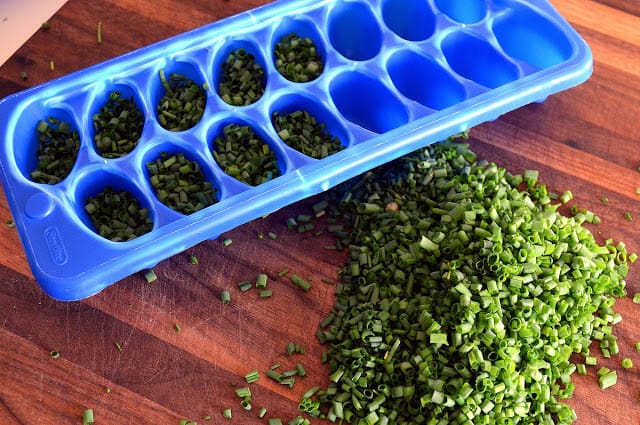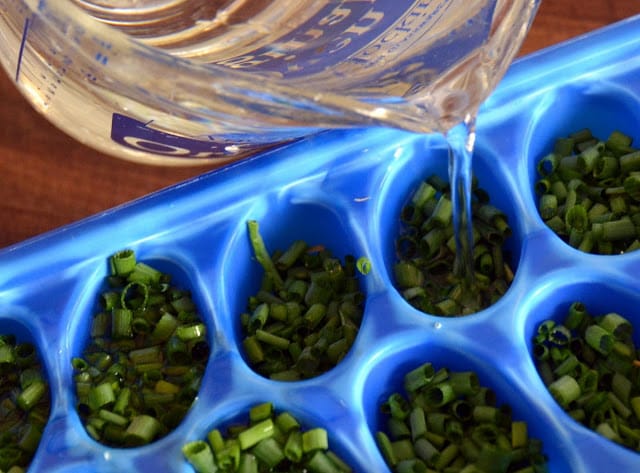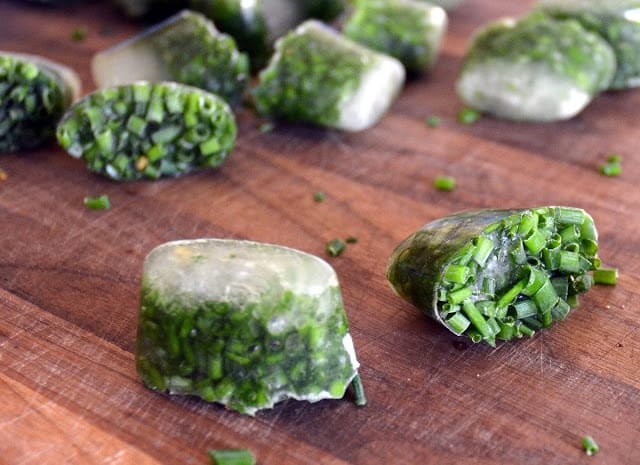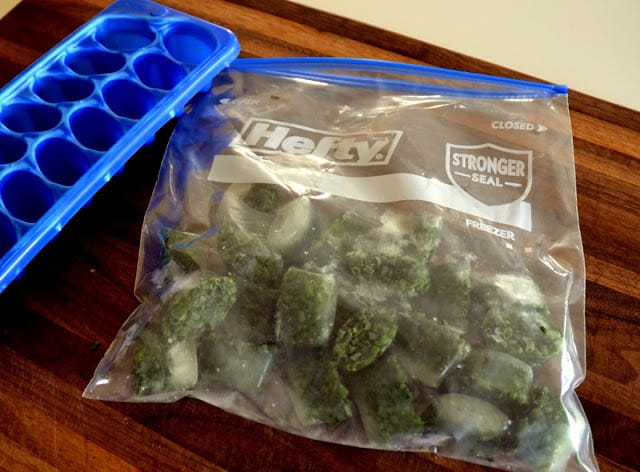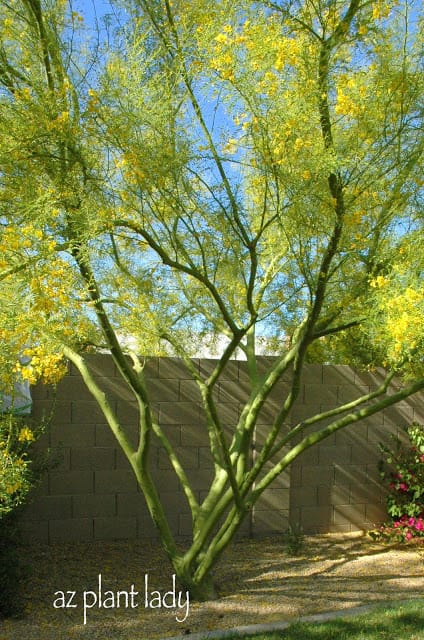Do you like to use fresh herbs when you cook?
What if you could just step outside your door and snip some herbs without having to go to the store?
Have you seen how expensive fresh herbs are at the supermarket by the way? And, who wants floppy herbs when they can have fresh ones?
I am often asked whether it is easy to grow herbs in the desert garden and I always answer, “yes!”
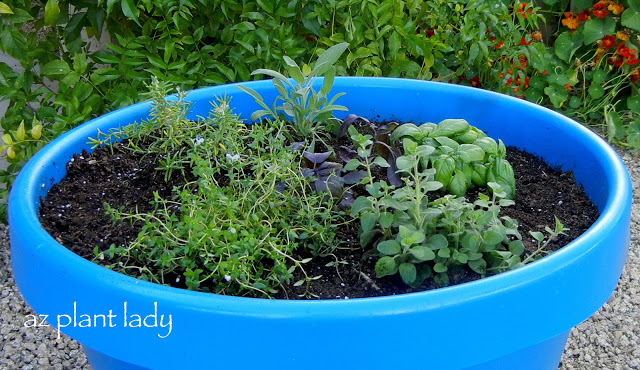
Herbs come from mostly arid regions and so they flourish in our climate. They also like the sun, which we have plenty of.
One of my favorite ways to grow herbs in containers. In fact, they do extremely well in pots – especially when planted together. Imagine having a variety of herbs growing in a container near your kitchen door.
It’s easy to do and here is how:
1. Place your container in an area that receives at least 6 hours of sun.

Basil
2. Fill your container with planting mix, which is sterile, has a light texture and is specially formulated for container plants. It retains just the right amount of moisture for plants. Potting soil can become soggy.
3. Add a slow-release fertilizer, such as Osmocote, and work it into the top 2-inches of soil.

Oregano
4. Plant your herbs. Oregano, rosemary, sage, and thyme are easiest to grow when you start out with transplants. Basil grows easily from seed, but can you also use transplants?

Sage
5. Water deeply. Do not wet the foliage when you water them as they prefer to stay dry.

Thyme
6. Herbs like to dry out between watering. To check when they need water, simply stick your finger down to 1-inch deep – if the soil is moist, don’t water. However, if it’s almost dry, then water deeply until water runs out the bottom drainage hole.
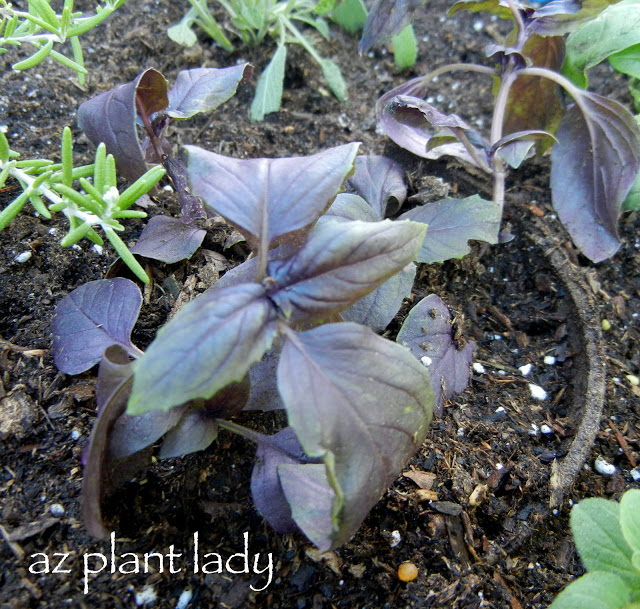
Purple Basil (Not the healthiest specimen, but it was the only one they had – it was over-watered at the nursery).
7. Don’t add any additional fertilizer after planting. Herbs don’t like extra fertilizer since it causes them to grow larger leaves with fewer oils, which is what gives them their flavor.
I like to place my herbs near my vegetable garden.
Here in the desert, we can grow herbs all year long. However, I do like to dry herbs like basil, which don’t live through our winters.
I encourage you to dip your toes into growing your own herbs. You can find transplants at your favorite nursery, so find a sunny spot and get started!
Click below for my container gardening tips…
Creative Container Gardening Tips


